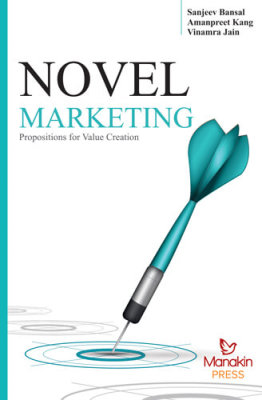Noushad Ahmed | Category: Library & Information Science
Binding Type: Paperback Binding
Book Details
ISBN: 9789386677570
YOP: 2017
Pages: 188
Order also on
The implementation of Integrated Library Systems (ILS) became widespread in the 1980s and 1990s as libraries started or continued to automate their procedures. These systems enabled library staff to work and in many cases, more professionally than they had in the past. However, these systems were also limiting—especially as the nature of the work began to change—largely in response to the progression of electronic and digital resources that they were not designed to manage. New library systems is the second (or next) generation system are needed to efficiently accomplish the methods of acquiring, describing, and making available all library resources. This book deliberates the state of library systems today and defines the arrangements needed in a next-generation library system. The authors also examine some of the next-generation library systems currently in development that purport to fill the varying needs of libraries.
1. Perception of Semantic Web Technologies in Libraries
2. Rage Against Machines in the Digital Environment: Attitudes of Librarians Towards Technology
3. Implement of Benchmarking: Essential for University Libraries
4. Comparative Features of Integrated Library Management Software Systems: A Study
5. Library Automation Features and Implementation: An Overview
6. Digital Library Services and Communities in Academic Libraries
7. Libraries in the Digital Age
8. Promotion of Digital Information in Public Libraries in India
9. Skills for the LIS Professionals in ICT Environment
10. Application of Information and Communication Technology in Academic Library: An Overview
11. ICT an Essential Tool for Library Automation
12. Importance and Usage of Internet for Library and Information Professionals
13. Need and Importance of Internet in Resource Sharing
14. RFID: A Case Study
15. Library Consortia in India: A Greater Access to the Library Resources
16. Library Consortia in Modern Era: An Overview
17. Library Consortium in the Current Era of Communication
18. Library Consortium in India: An Overview
19. The Concept of E-Consortium: In Indian Perspective
20. Effective Use of E-Resources by the Students and Faculty Members: A Study of Jesus and Mary College Library, University of Delhi
21. Remote Access of Electronic Resources for Library Capacity Building: An Experience of National Law University Delhi
22. Open Educational Resources: An Overview
23. Use of E-Resources by the Faculty Members of the YMCA University of Science and Technology
24. Introduction to Library Automation: Issues and Challenges
25. E-Resources: As Revolutionize Instrument in Present Scenario
26. Use of E-Resources and Services in Jawaharlal Nehru Library, Kurukshetra University
27. Cloud Computing: A Perspective Study and its use in Educational Institution
28. Cloud Computing and Libraries
29. Study on Cloud-Based Mass Data Storage of Libraries
30. Zotero: A Reference Management Software
The implementation of Integrated Library Systems (ILS) became widespread in the 1980s and 1990s as libraries started or continued to automate their procedures. These systems enabled library staff to work and in many cases, more professionally than they had in the past. However, these systems were also limiting—especially as the nature of the work began to change—largely in response to the progression of electronic and digital resources that they were not designed to manage. New library systems is the second (or next) generation system are needed to efficiently accomplish the methods of acquiring, describing, and making available all library resources. This book deliberates the state of library systems today and defines the arrangements needed in a next-generation library system. The authors also examine some of the next-generation library systems currently in development that purport to fill the varying needs of libraries.
1. Perception of Semantic Web Technologies in Libraries
2. Rage Against Machines in the Digital Environment: Attitudes of Librarians Towards Technology
3. Implement of Benchmarking: Essential for University Libraries
4. Comparative Features of Integrated Library Management Software Systems: A Study
5. Library Automation Features and Implementation: An Overview
6. Digital Library Services and Communities in Academic Libraries
7. Libraries in the Digital Age
8. Promotion of Digital Information in Public Libraries in India
9. Skills for the LIS Professionals in ICT Environment
10. Application of Information and Communication Technology in Academic Library: An Overview
11. ICT an Essential Tool for Library Automation
12. Importance and Usage of Internet for Library and Information Professionals
13. Need and Importance of Internet in Resource Sharing
14. RFID: A Case Study
15. Library Consortia in India: A Greater Access to the Library Resources
16. Library Consortia in Modern Era: An Overview
17. Library Consortium in the Current Era of Communication
18. Library Consortium in India: An Overview
19. The Concept of E-Consortium: In Indian Perspective
20. Effective Use of E-Resources by the Students and Faculty Members: A Study of Jesus and Mary College Library, University of Delhi
21. Remote Access of Electronic Resources for Library Capacity Building: An Experience of National Law University Delhi
22. Open Educational Resources: An Overview
23. Use of E-Resources by the Faculty Members of the YMCA University of Science and Technology
24. Introduction to Library Automation: Issues and Challenges
25. E-Resources: As Revolutionize Instrument in Present Scenario
26. Use of E-Resources and Services in Jawaharlal Nehru Library, Kurukshetra University
27. Cloud Computing: A Perspective Study and its use in Educational Institution
28. Cloud Computing and Libraries
29. Study on Cloud-Based Mass Data Storage of Libraries
30. Zotero: A Reference Management Software












Reviews
There are no reviews yet.